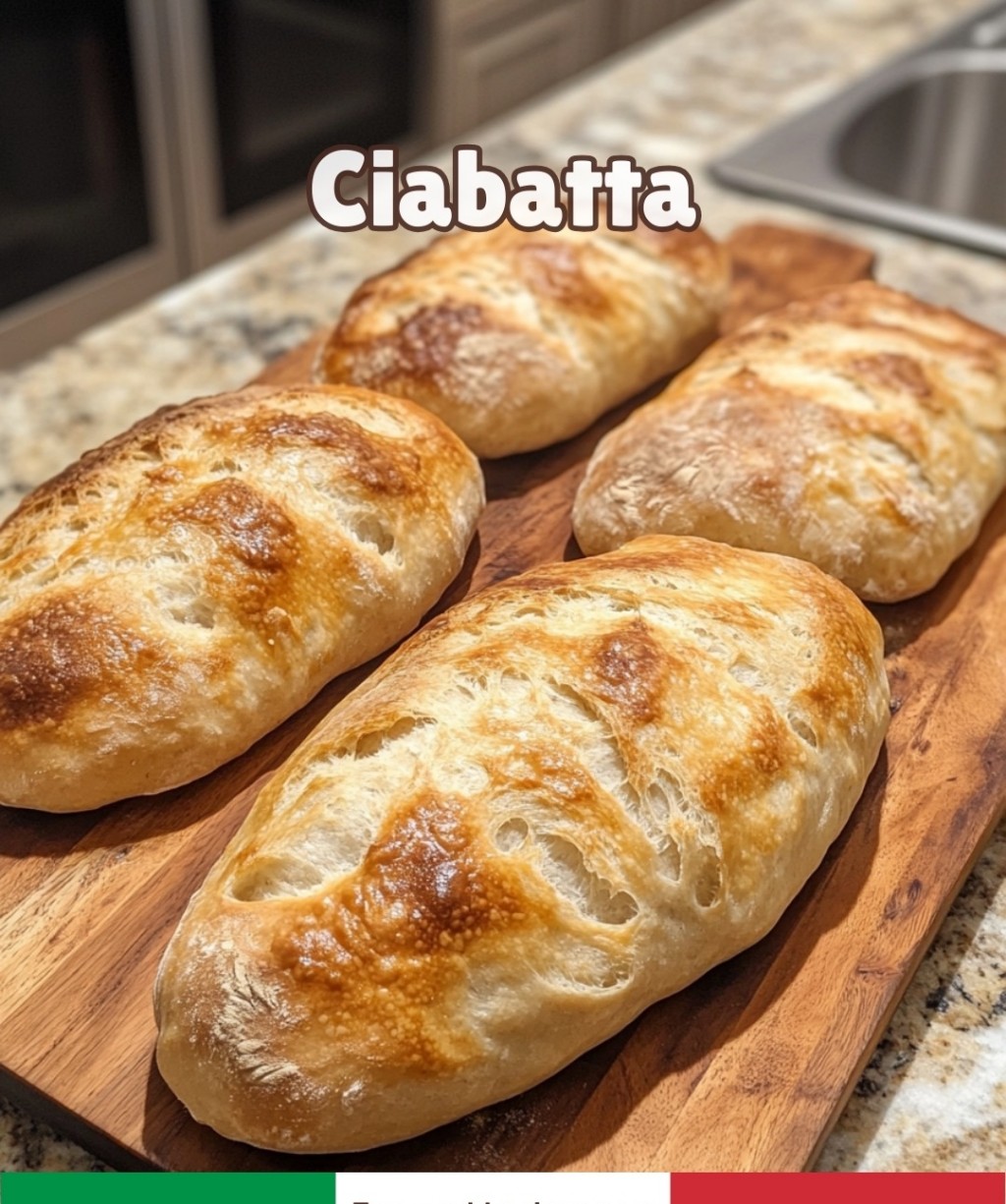ADVERTISEMENT
Step 2: Mix the Dough
After the Biga has fermented, it’s time to mix the dough.
- In a large bowl, combine 3 1/2 cups of bread flour, 1 1/2 teaspoons of salt, and 1 teaspoon of active dry yeast.
- Add the Biga to the flour mixture, along with 1 1/2 cups of warm water. You’ll need to use your hands or a wooden spoon to mix the dough until it comes together.
- Once mixed, add 2 tablespoons of olive oil and knead the dough for about 8–10 minutes. The dough should be slightly sticky and soft—this is what will create those airy pockets in the bread.
Step 3: Bulk Fermentation
This is where the magic happens! Allow the dough to rest and rise, developing the characteristic Ciabatta texture.
- Cover the bowl with a damp cloth or plastic wrap and let it rise for about 1 1/2 to 2 hours, or until it has doubled in size.
- After the dough has risen, gently turn it out onto a floured surface. Be careful not to deflate the dough too much—you want to keep those bubbles intact.
Step 4: Shape the Ciabatta Loaves
Ciabatta has its signature slipper-like shape, which is fairly simple to create.
- Divide the dough in half, gently shaping each half into a rectangular loaf. Don’t over-handle it—Ciabatta should have a loose, airy structure.
- Dust a baking sheet or a pizza stone with a bit of flour, and place the loaves onto the prepared surface.
- Let the dough rise for another 30 minutes while you preheat your oven to 475°F (245°C).
Step 5: Bake the Ciabatta
To get that beautiful golden crust, it’s important to bake the Ciabatta in a very hot oven.
- Before placing the dough into the oven, spray the oven walls with water to create steam. This helps the bread form its signature crispy crust.
- Bake the Ciabatta for about 25-30 minutes, or until the loaves are golden brown and sound hollow when tapped on the bottom.
- Remove from the oven and let them cool on a wire rack.
Tips for Perfect Ciabatta Every Time
- Don’t rush the fermentation: The slow rise and the use of the Biga starter are what give Ciabatta its rich flavor. Make sure to give the dough enough time to ferment properly.
- Use the right flour: Bread flour has a higher gluten content, which is essential for the chewy texture and open crumb structure of Ciabatta.
- High hydration dough: Don’t be afraid if your dough feels sticky or wetter than other bread doughs. This is typical for Ciabatta and contributes to its airy, light texture.
- Steam is key: Creating steam in the oven helps achieve a crisp, golden crust. You can do this by spraying the oven with water before baking or placing a pan of water at the bottom of the oven.
- Baking on a pizza stone: If you have one, a pizza stone helps evenly distribute heat for a perfectly crisp crust.
How to Serve Ciabatta
Ciabatta is incredibly versatile and pairs well with a wide range of dishes. Here are a few ideas on how to enjoy it:
- Sandwiches: Use Ciabatta as the base for sandwiches—its sturdy yet soft texture makes it perfect for holding fillings like roasted meats, cheese, and vegetables.
- Dipping: Serve Ciabatta with olive oil and balsamic vinegar for dipping, or pair it with your favorite pasta dishes.
- Toast: Ciabatta makes excellent toast. Just slice it and toast it in a pan with a little butter for a crispy snack.
Final Thoughts
Making homemade Ciabatta is a rewarding experience that results in a loaf that’s crispy on the outside, chewy on the inside, and full of flavor. With just a few simple ingredients and a little patience, you can bake a loaf that rivals any bakery-bought bread. Whether you’re enjoying it as a sandwich or serving it as a side dish, this Ciabatta recipe is sure to impress friends, family, and anyone lucky enough to get a slice.
So, roll up your sleeves and give this best Ciabatta recipe a try—you won’t regret it! 🍞
ADVERTISEMENT
